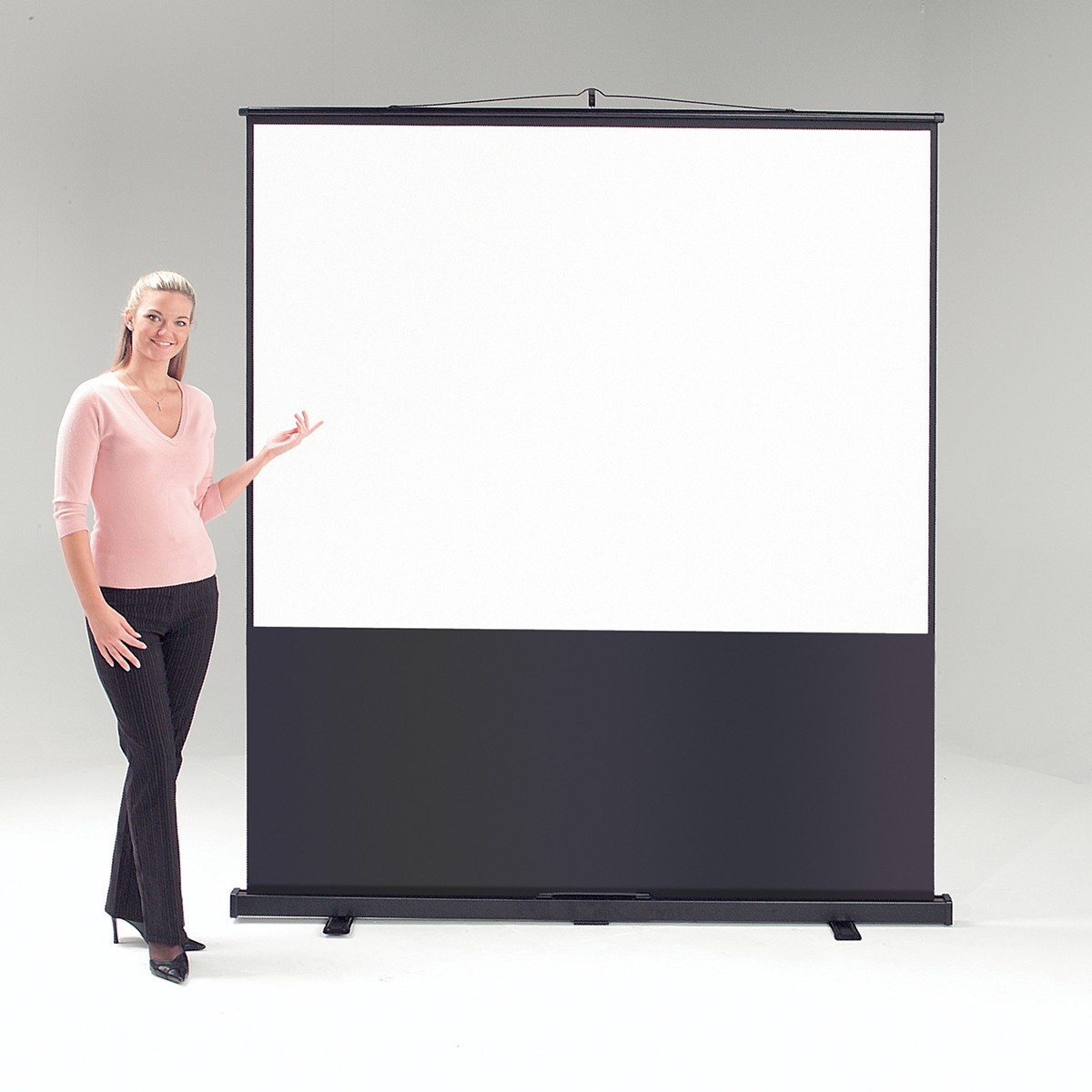Like a car without wheels, there’s not much use to a projector without a projector screen – but actually knowing what sort of projector screen you need can be tough.
As projectors have grown in purpose and reduced in size, the types of projector screens available have evolved too, becoming portable, electrified and more. There are now projector screens for every possible use case, but which is best suited for your application? Here’s our guide to the various types of projector screen:
- Fixed Frame Projector Screens – A popular choice for businesses and individuals planning on fixing their projector in place permanently, fixed frame projector screens are hung on the wall like a painting and provide a perfect projecting surface or any application. Because they’re fixed in place and don’t retract, they aren’t suitable for moving around and will occupy a permanent space on your wall, so keep that in mind.
- Tripod Projector Screens – A type of portable projector screen, tripod projector screens have a tripod base and a pull-out projector screen, making them ideally suited for educational or travelling purposes.
- Folding Frame Projector Screens – Best served for large applications like in auditoriums, trade shows or outdoor events, folding frame projector screens have two large legs for stability and have to be constructed due to their larger size.
- Floor Rising/Pull Up Projector Screens – Floor rising projector screens are another popular portable option as they roll out and clip into place from a single large metal tube. This ensures that they’re exceptionally easy to transport and set up, alongside boasting strong supports.
- Electric Projector Screens – Electric projector screens are exactly what their name suggests they are. Once installed and plugged in, they can be expanded and retracted with the click of a button, making them an extremely unobtrusive addition to any working or educational space.
- Manual Projector Screens – Taking the form of a long metal rectangle until they’re unfolded, manual projector screens are very similar to their electric siblings, except they must be expanded and retracted by hand, locking in to place at various intervals for your convenience.
- Rear Projector Screens – Unlike most projector screens which are designed to be lit from the front, rear projector screens are intended to be projected upon from the back. Do note, however, that these are constructed specifically for this purpose and should not be lit from the front.
- Tabletop Projector Screens – Perhaps the ultimate in go-anywhere projector screen technology, tabletop projector screens sit easily on any flat surface (often a table) to create beautiful presentations, instantly. They’re ideal for businesses which travel to court new clients but don’t have a large amount of space for transporting a projector screen.
Within these types of projectors, you’ll find there are two main aspect ratios to choose from: 4:3 and 16:9. The former is more like a traditional computer monitor and almost a square, making them ideal for presentations where lots of text is being displayed. 16:9, meanwhile, is better suited to media as it mimics the shape of your television, offering a widescreen presentation without large black bars.
To learn more about our projector screens, get in touch and see how we can help.



